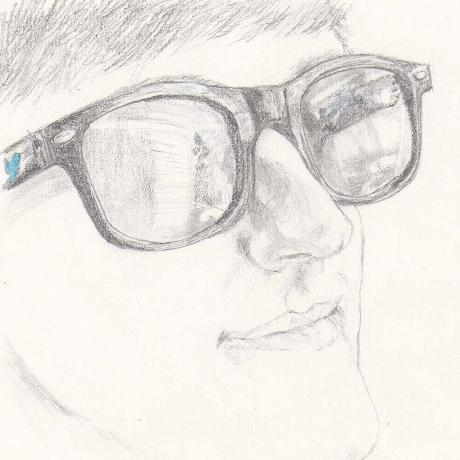Our last day in Montreux, the start of our time in Italy. The start this morning was somewhat lazier than others - we loaded the car and left for a bakery down the road, where I got a chocolate crossoint and a chocolate smiley face popsicle for the road. We sat outside the patisserie, admiring the swiss army knives in the shop next door.
After we ate, we stopped admiring them and each bought one. We mostly bought the off-brand knives, as the real ones were quite expensive.
Then it was pile in the car and drive to the Château de Chillon on our way out of town. The Château de Chillon was one of only a handful of places that the kids singled out before the trip as wanting to go to, and the only one that multiple recommended before the trip. So we had to go.

The castle was… Oddly laid out. It was built on an island, in the sense that the island was about 10 meters from the edge of the lake (the moat had a family of geese, complete with four goslings). According to Wikipedia, the castle has somewhat unknown recorded history, but was a Roman outpost before it became a medieval castle before 1005. By the 1200s it was owned by the Savoy family, who controlled the lake and several strategically important roads through the alps.
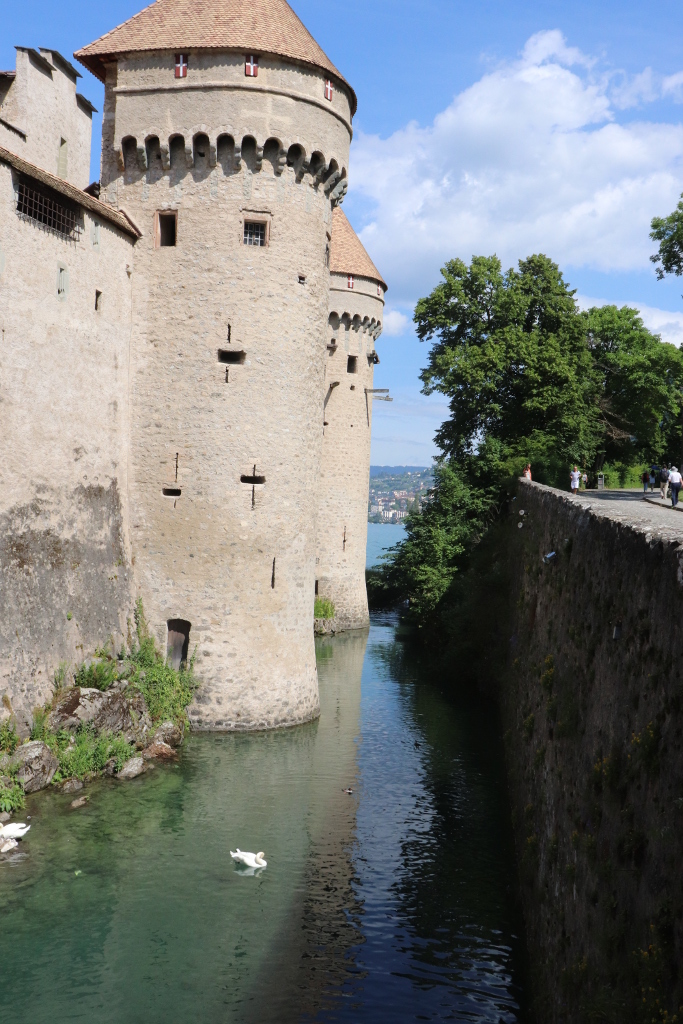
Ellen, Jason, and I split from the other three (as is typical) and started our tour in the wine cellar, and shortly thereafter the dungeon, as they were adjoining. Despite being a large (and dark) cavern made entirely of rock, the dungeon was anechoic - if you talked or clapped your hands, you would hear a deafening silence in return. All you hear is the lapping of waves on the shore.
Quite romantic, really. Most romantic of all the prisons I’ve been in.
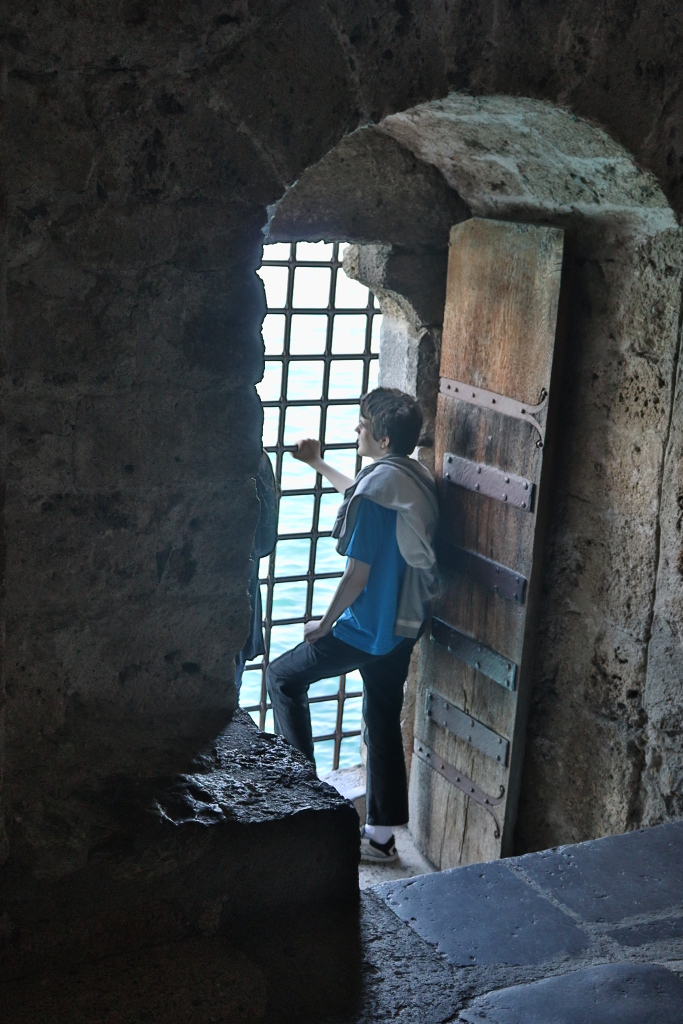
The prison room didn’t lead anywhere, unsurprisingly, so we headed upstairs. The castle was built somewhat haphazardly, so the layout is complicated and hard to understand. In general terms, there were three main courtyards, and then walls surrounding those, with the walls containing rooms. The dungeon and wine cellar were built into the basement of the castle.
For some reason, all of the doors were only around 5’8” tall. It could have something to do with the fact that it seems like the doorways were built as an afterthought after they built rooms.
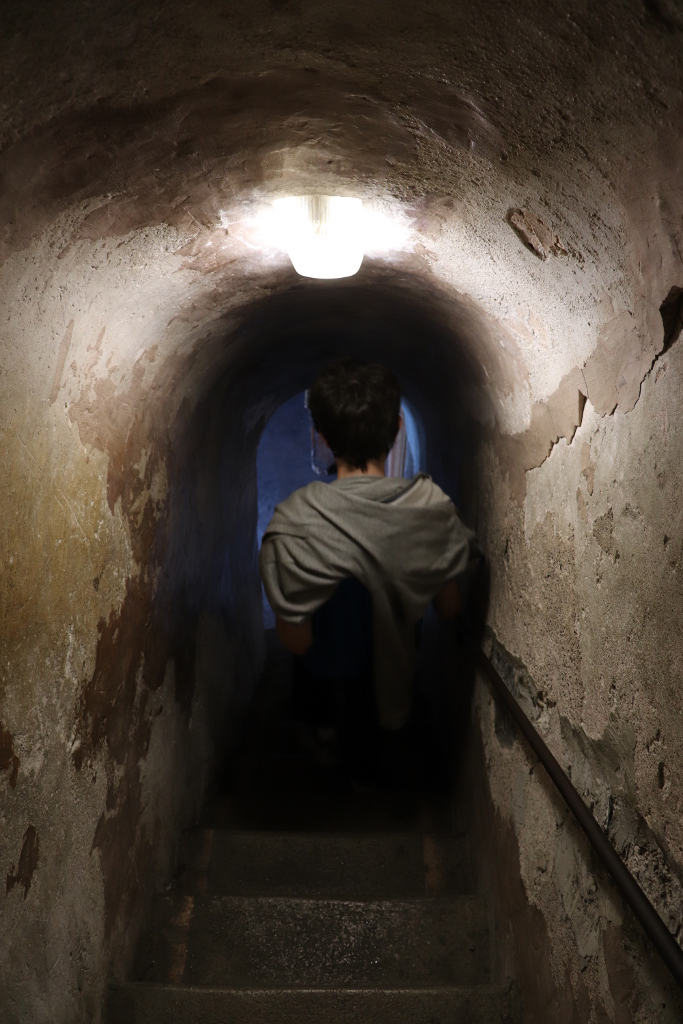
Wandering through one of the walls, we saw a loot room full of chests (and also some different gear for the horses of the time), we saw the master bedroom, and we several ceremonial rooms of various sorts. The master bedroom had a very well-done hand-drawn map of the region, from the late 1200s. It mostly looked the same, but without urban centers. Also it was drawn upside-down: South was drawn as up (so Montreux was on the left of the lake, amd Geneva on the right). There was no compass rose, so we were debating whether or not they even had a notion of which way was North. We figured they did, since in a later room we saw that they had compasses.
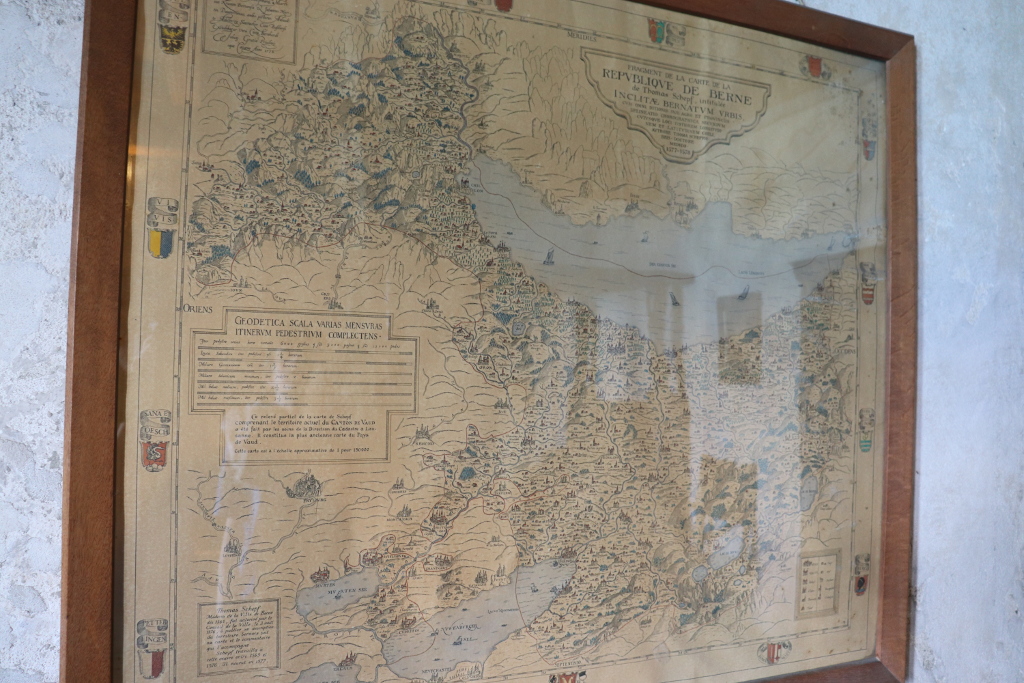
While they did have compasses, the magnetic North pole has moved substantially far since the 1200s. Now it’s in the Arctic Circle, in Northern Canada, but back then it was roughly halfway between Iceland and England.
Imagine if North in England meant “toward Ireland.”
We eventually met up with Dad and Ryan (We often get separated from Kayla in museums - she falls behind us fast movers and then can be pretty reliably found in the gift shop for some reason). Once with the other two we explored the printing press, the latrines (the original ones, not the new one near the entrance), and the chapel.
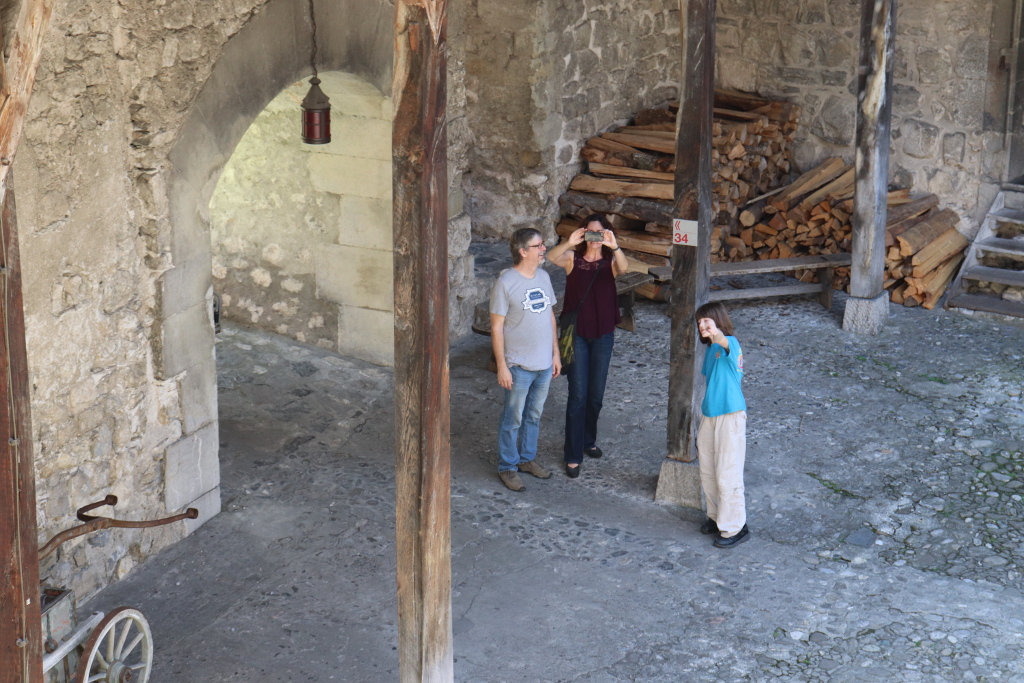
The chapel was striking, because the clean lines stood out from the design of most of the other rooms in the castle.
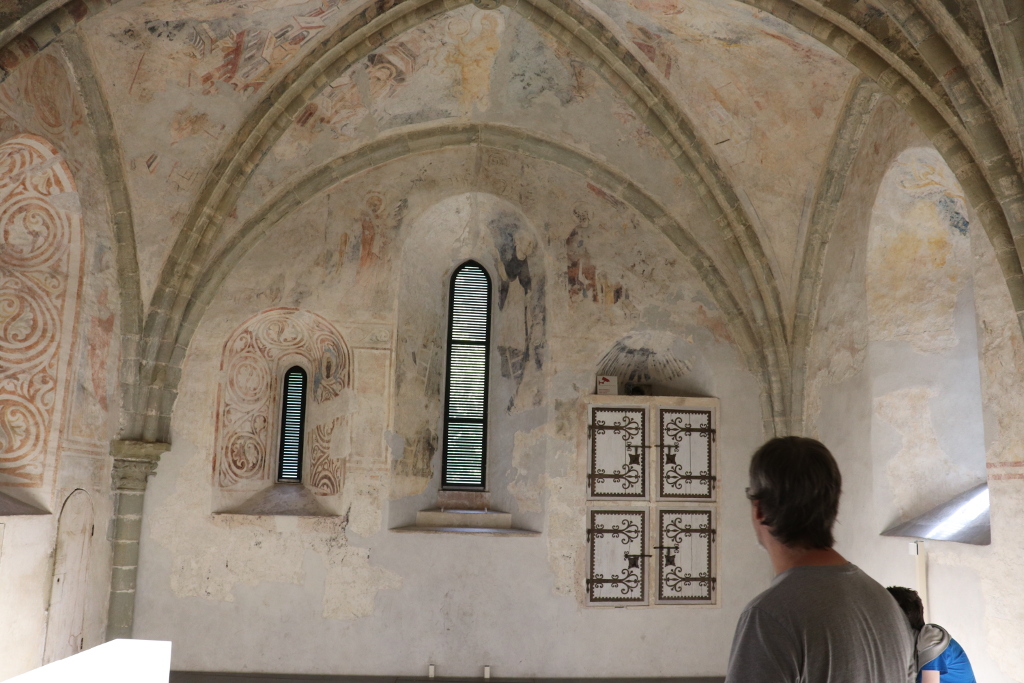
After the castle, we all loaded up in the car for the drive through the Alps and into Turin. Did we mention it was beautiful in Montreux?
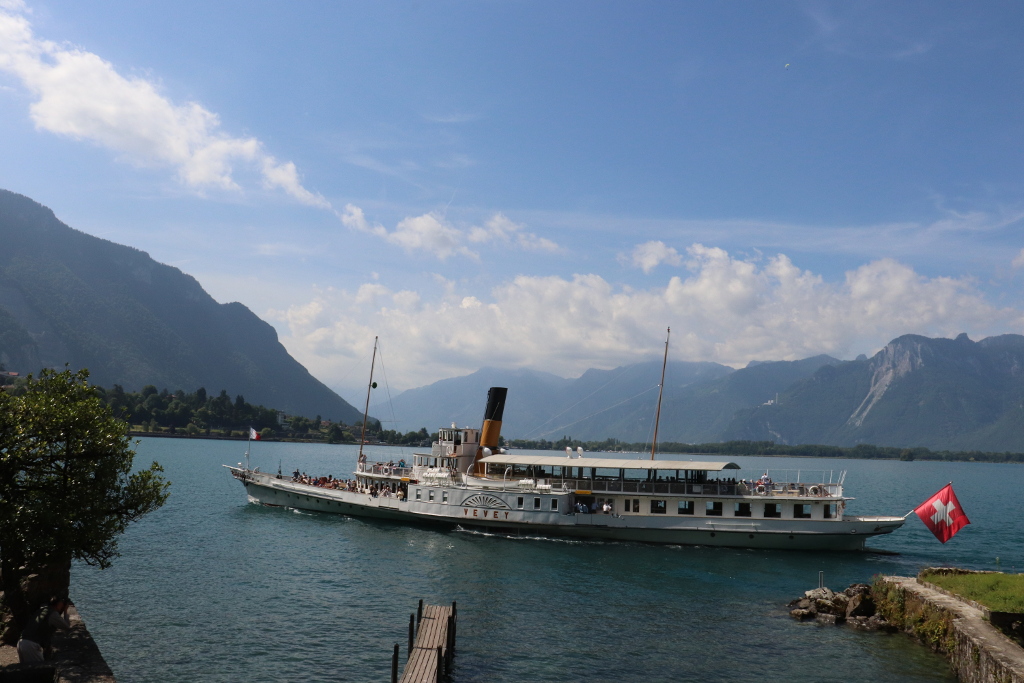

There was a cold water fountain on the way out of the castle, which we splashed on our faces to protect us from the heat.
As before, Ryan was packed in the back amid a pile of luggage.
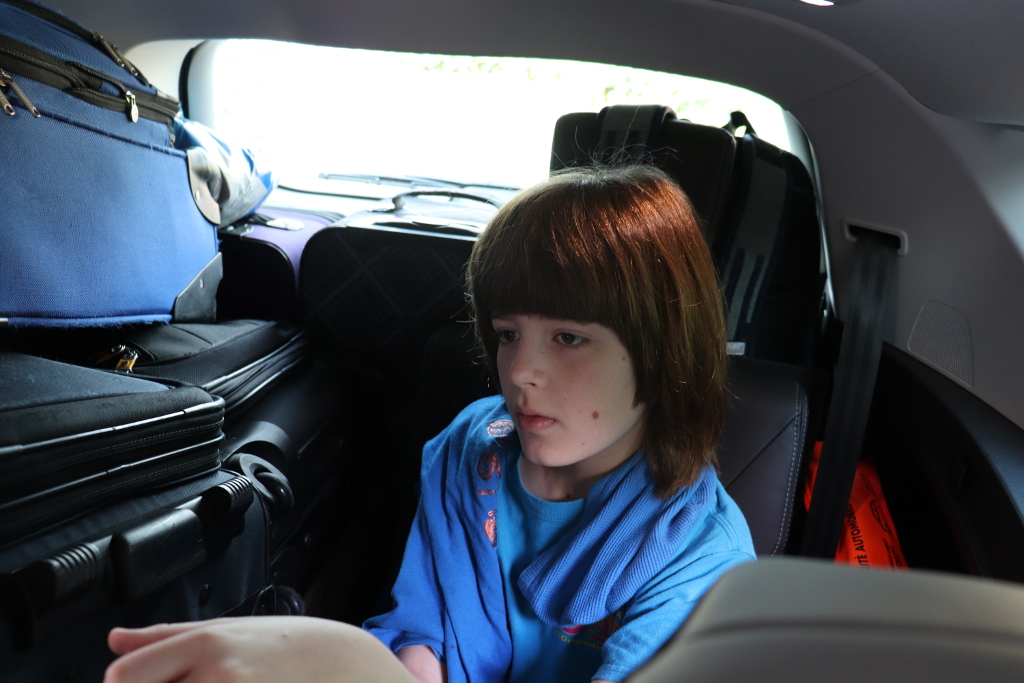
The road into the Alps started out decently flat, but then slowly got steeper and steeper. They use a lot more tunnels here in Europe than in America. Someone suggested it might be a cultural memory from wartime - bridges are easier to shoot at than tunnels.
Regardless, the road into the alps dodged into and out of tunnels. Mountains grew around us, and we weaved through the valleys below, through many an assorted mountain village. For lunch we stopped in Martigny, a small town just before the St. Bernard pass.
The same St. Bernard as the dog breed. There were several statues of such dogs, with the cask of rum around their neck.
We ended up in what was ostensibly a sleepier part of town. The only pizzeria for some ways fortunately let us eat, even though they were about to close, it being almost 2:00. I’ve noticed, here in Europe, many restaurants close in the middle of the afternoon. In America a good number are open 24⁄7, or continuously from breakfast to midnight, or some combination. However, here they have stricter labor laws, which apparently mean that wait staff have to be paid actual wages (correspondingly, tipping is not expected). So, it costs a lot more for the restaurant to be open when there are no customers.
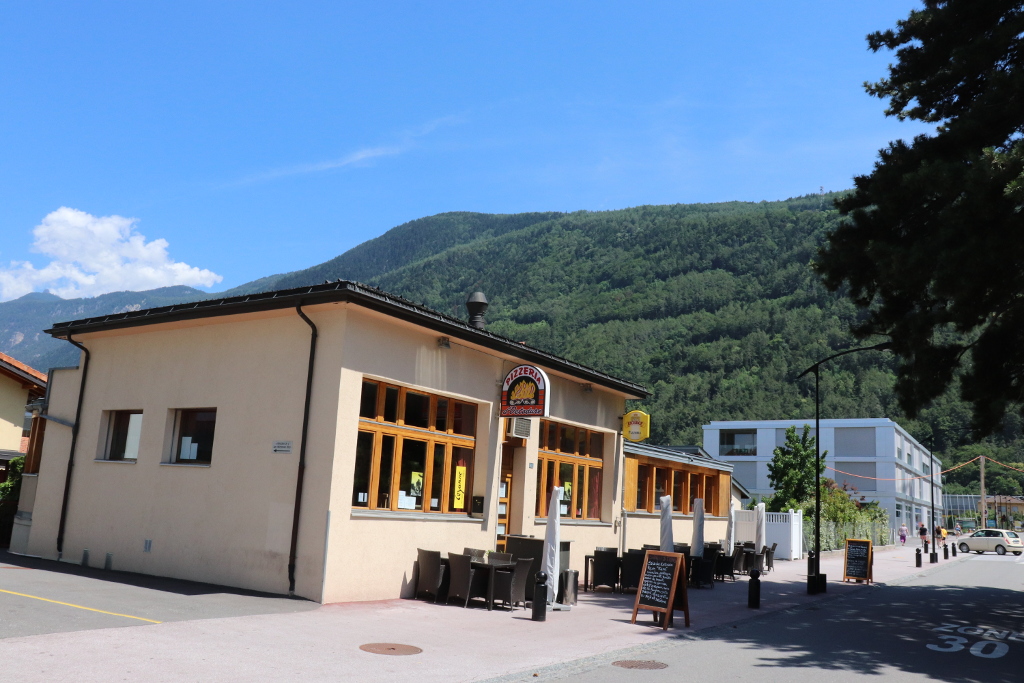
Thus, restaurants close when it isn’t mealtime. I like this, because then the wait staff gets treated fairly, but when you’re traveling it can be hard to plan your stops.
Anyway, at the restaurant I had my first marinara pizza of the trip, and Jason had the first of his life. He seemed to like it quite a bit (in fact, writing this four days later, he has ordered it every time we’ve gotten pizza).
After lunch we went to grab packaged ice cream from the co-op (the local grocery store chain, roughly equivalent to a H-E-B if you’re from Texas). The first one we stumbled into was actually a combination hardware store and pet supply store (so apparently they’re also equivalent to Petsmart and Lowe’s).
We did eventually find the store and get our ice cream, and then got back on the road after admiring the beautiful valley the town lived in.
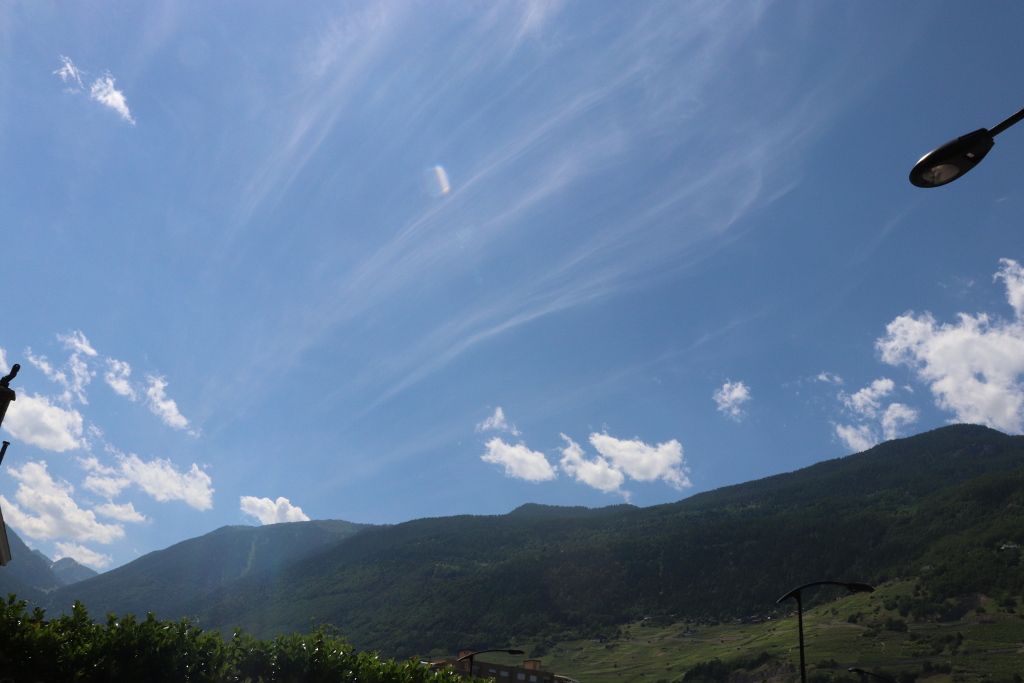
According to Wikipedia, “Great St. Bernard Pass is the third highest road pass in Switzerland. It connects Martigny in the canton of Valais in Switzerland with Aosta in the region Aosta Valley in Italy.” (at 8,100 feet)
When they say it’s 8,100 feet, they forgot to mention that that’s 8,100 feet above the bottom of the valley right next to your car, not 8,100 feet above sea level.
It’d be a lot more comforting if they had a guardrail, also.
To be fair, we lived, if only because the weather was nice. While Dad white-knuckled it on the wheel, the rest of us got alternating views of beautiful mountains and the insides of tunnels.
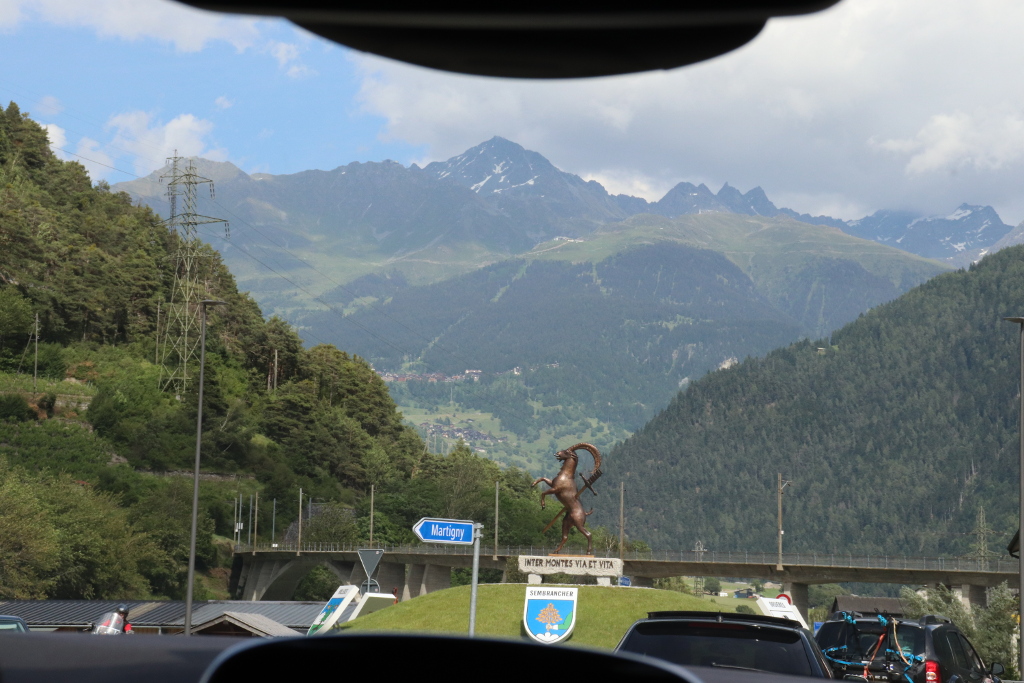
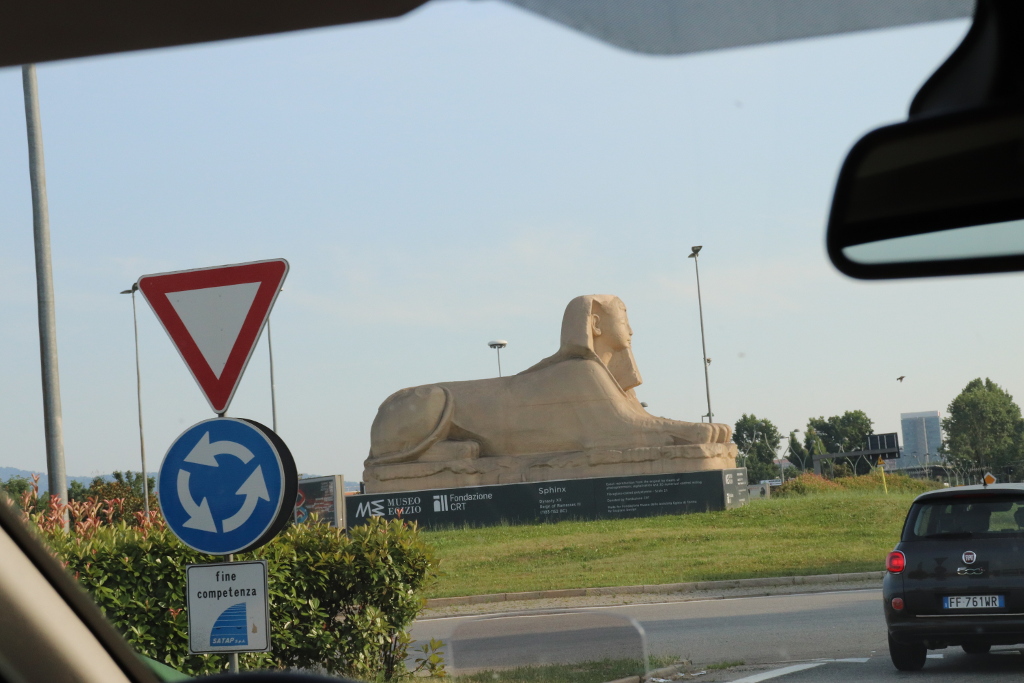
In this area a lot of the roundabouts have a statue in the middle. One could make a tour of just seeing the different statues (the Sphinx one is actually from as we were entering Turin).
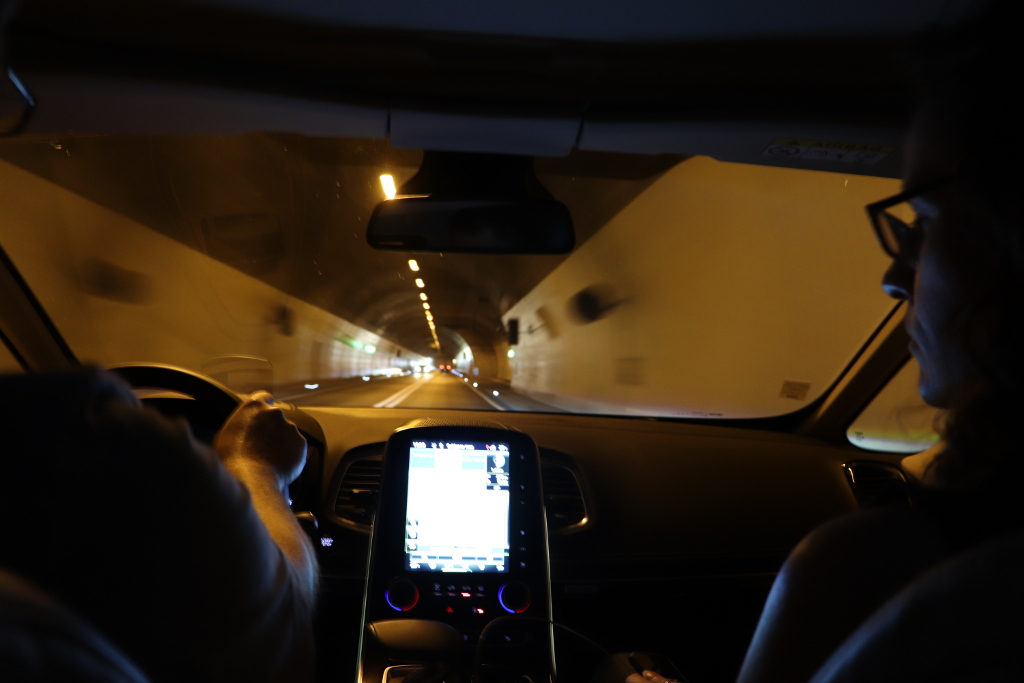
The Grand St. Bernard tunnel is so big, that we crossed into Italy while inside the tunnel.

After the tunnel, we stopped for a bit to stretch our legs.
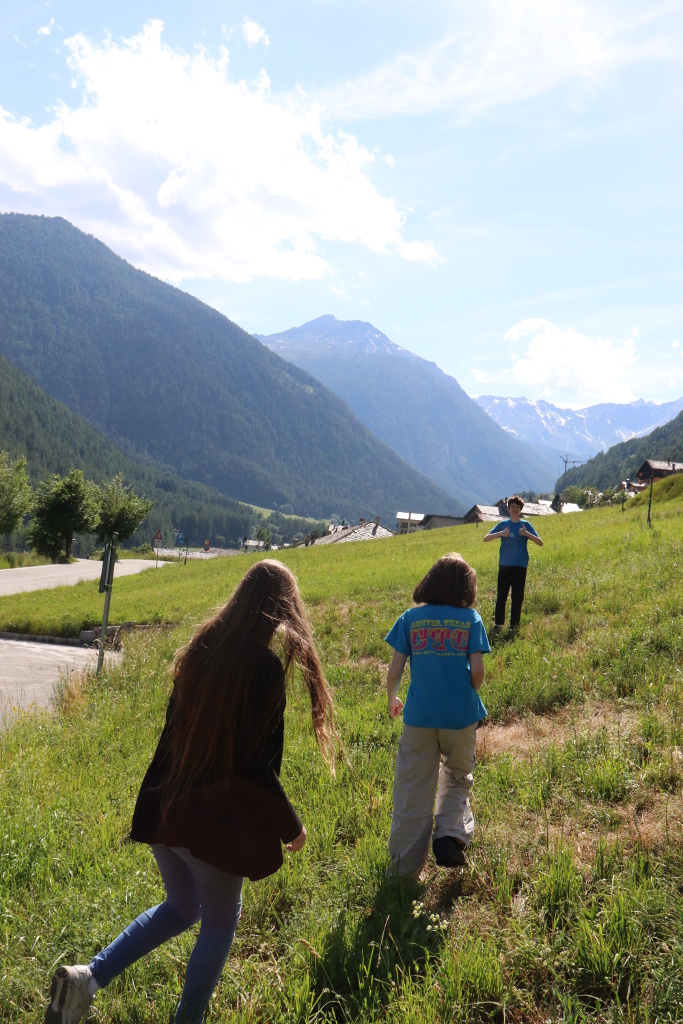
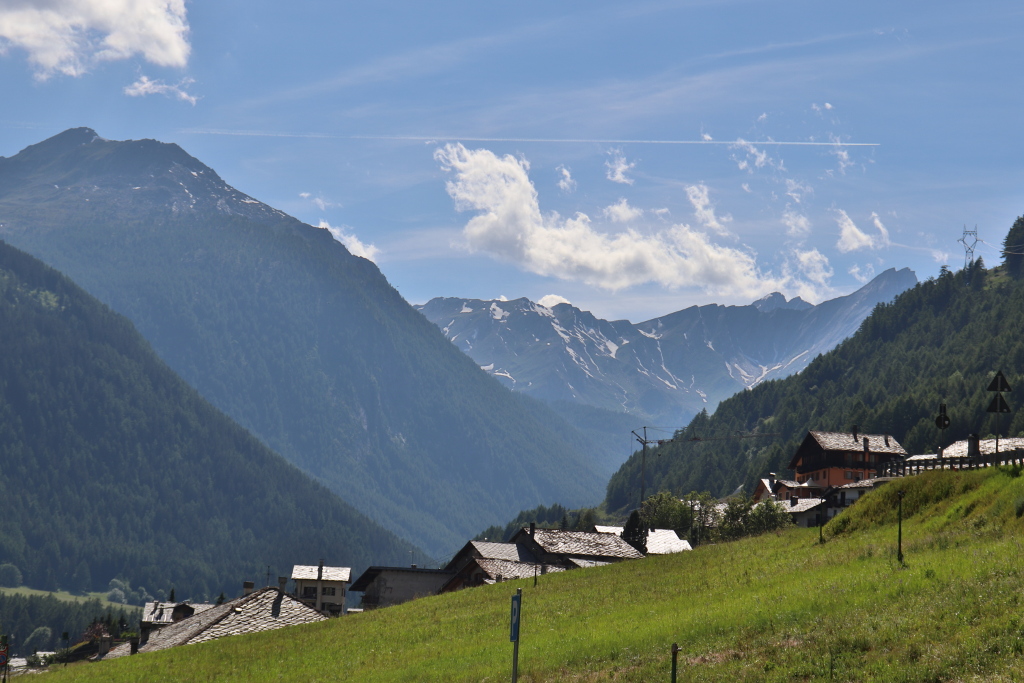
In Italy, we got to see the Aosta valley twice, because we turned on the wrong highway, and because of the way the roads are setup we had to drive 45 minutes to the nearest offramp, turn around, and then drive 45 minutes back to the right road.
Along the way we saw a number of castles, though, so it was okay in the end.
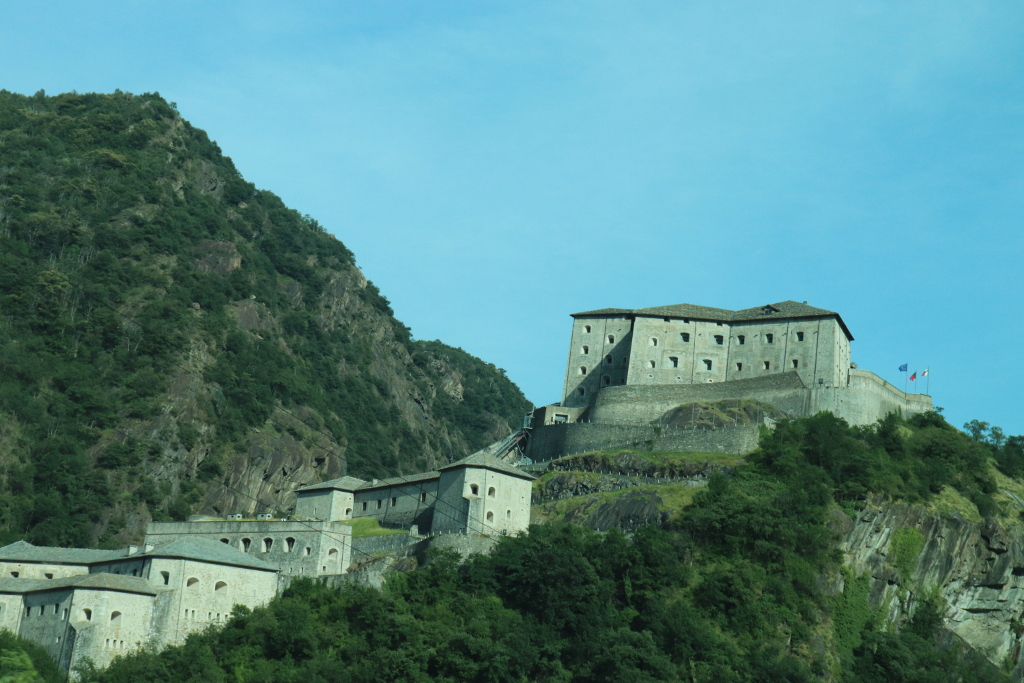
Eventually, we did make it out of the mountains and into the foothills to Turin. I had pictured Turin as a sleepy country town with a church with a shroud, but it turned out to be quite a bustling city.
A recurring theme on this blog is Italian elevators. Did you know Italy has (or had, until very recently) more installed elevators than even the U.S., and is surpassed only by Spain? I’ve done a few projects based around this somewhat surprising fact.
As it turns out, many Italian apartment buildings (or, at least, the one we were in) have elevators. And they have more apartment buildings than the U.S. Not only do they have elevators, but apparently in some cases they’re a luxury that the apartment charges extra for, like car parking in the U.S. - you can lease an apartment with elevator, or without.
So that’s where all the extra elevators come from.

In this image you see the courtyard of our apartment, the elevators are the glass tubes on the far side (and the right side of the image).
The other thing different about Italy, from the other countries we’ve been in, is the driving. One assumes that the whole Italians-are-bad-drivers is a racist stereotype. It may be, but it’s also true (or, at least, they’re crazy drivers). Where in Switzerland cars have to stop for pedestrians waiting at a crosswalk (by law), in Italy pedestrians aren’t even safe on the sidewalk. Lane markings are apparently optional, and parking is sometimes on the sidewalk and sometimes double-parking, enclosing nearby cars.
Fortunately, despite our enormous car (bigger than a Fiat, anyway), we managed to find an actual parking spot just down the road from our flat.
Throughout the trip so far, for the AirBnBs we’ve stayed at, the host’s English has gotten progressively worse but the flat has gotten progressively better (no offense to any of our AirBnB hosts - you were all amazing, and stop apologizing for your English because your English is way, way better than my Italian/French/German/British English).
Regardless, this flat was very hip. There were slogans on the walls, a view over a park across the street, and a stack of Cosmopolitans and Golf Digests on the end tables.
It was very out of place.
For dinner, we ran into our AirBnB host at a creperie downstairs, and he guided Dad and Kayla through the menu there. I took the other three to a crowded pizza restaurant just down the road.
The pizza was good, so were the crepes, I’m told.
After food we stopped for gelato, which is always a good way to end the day.
